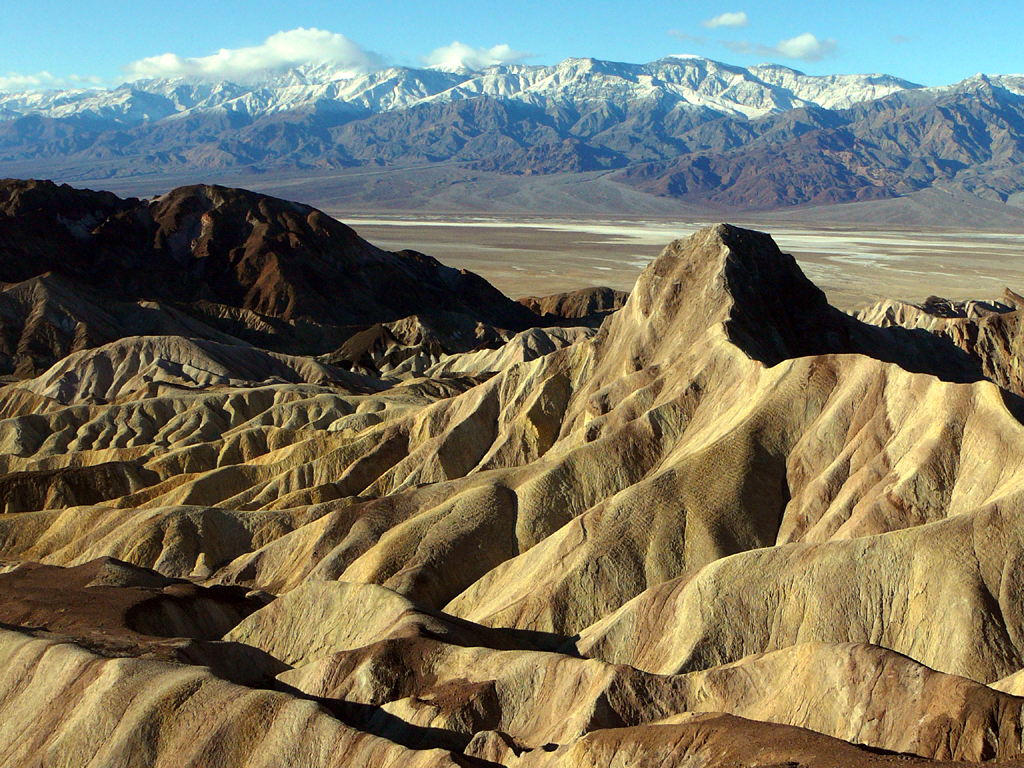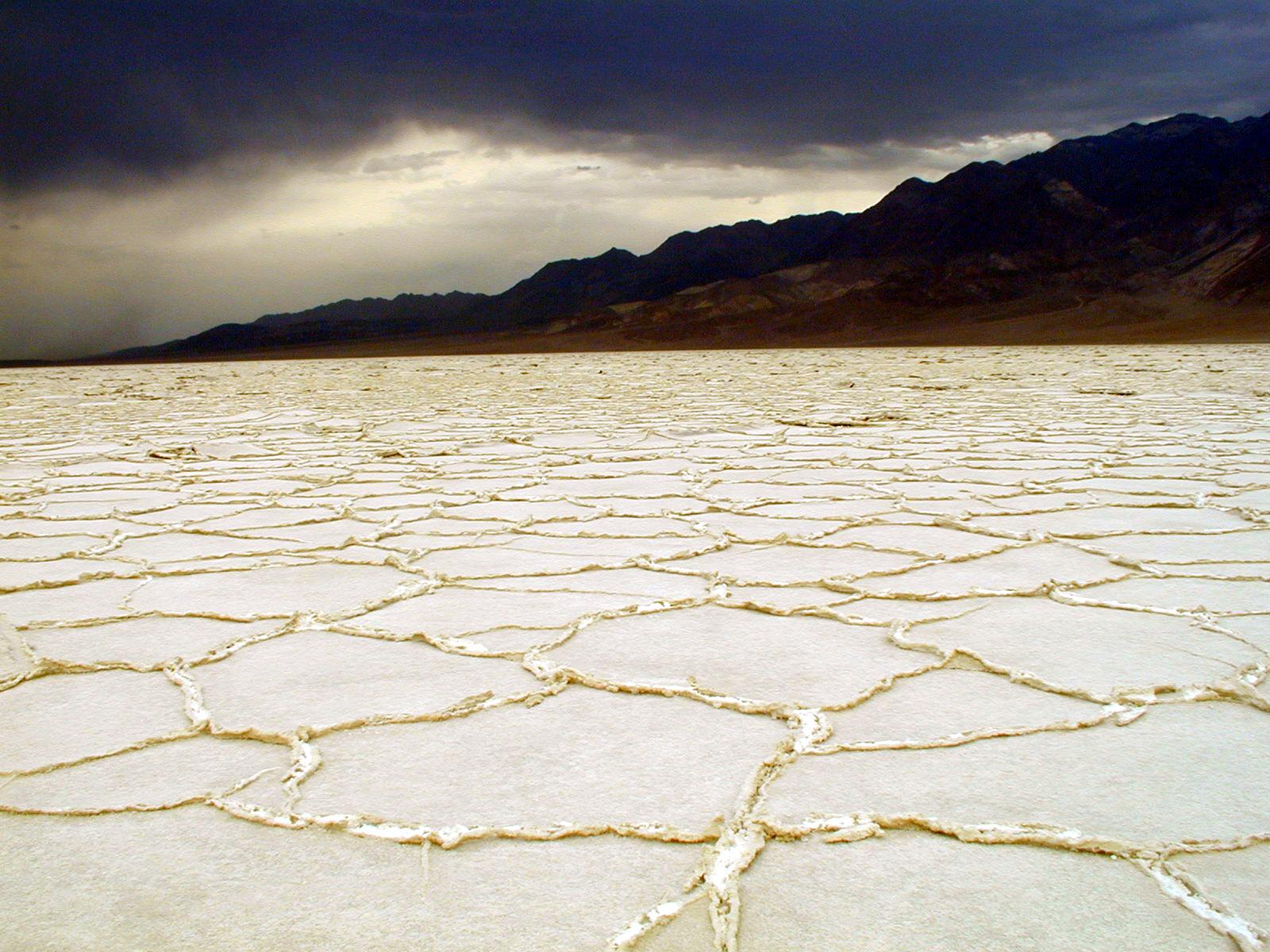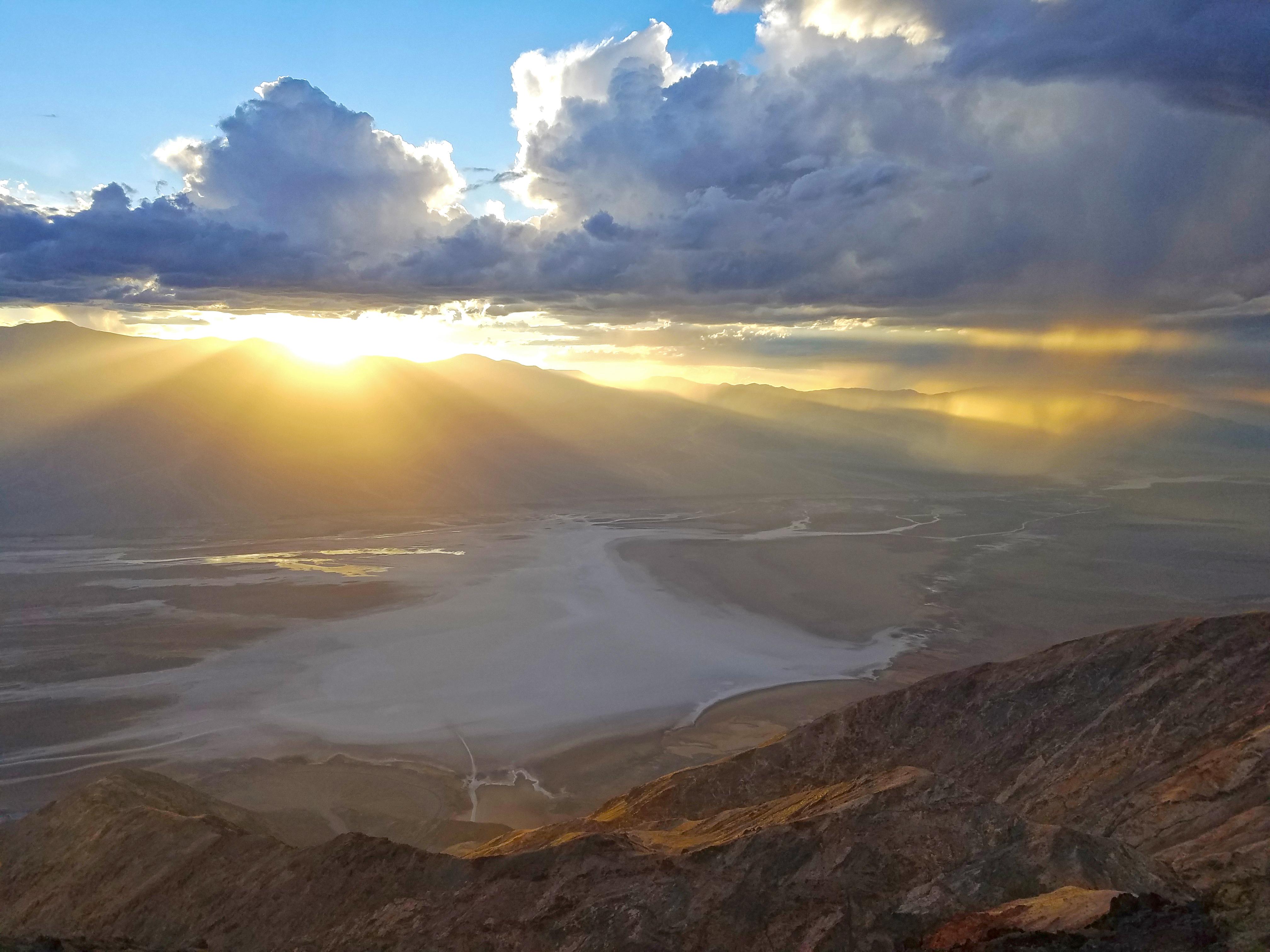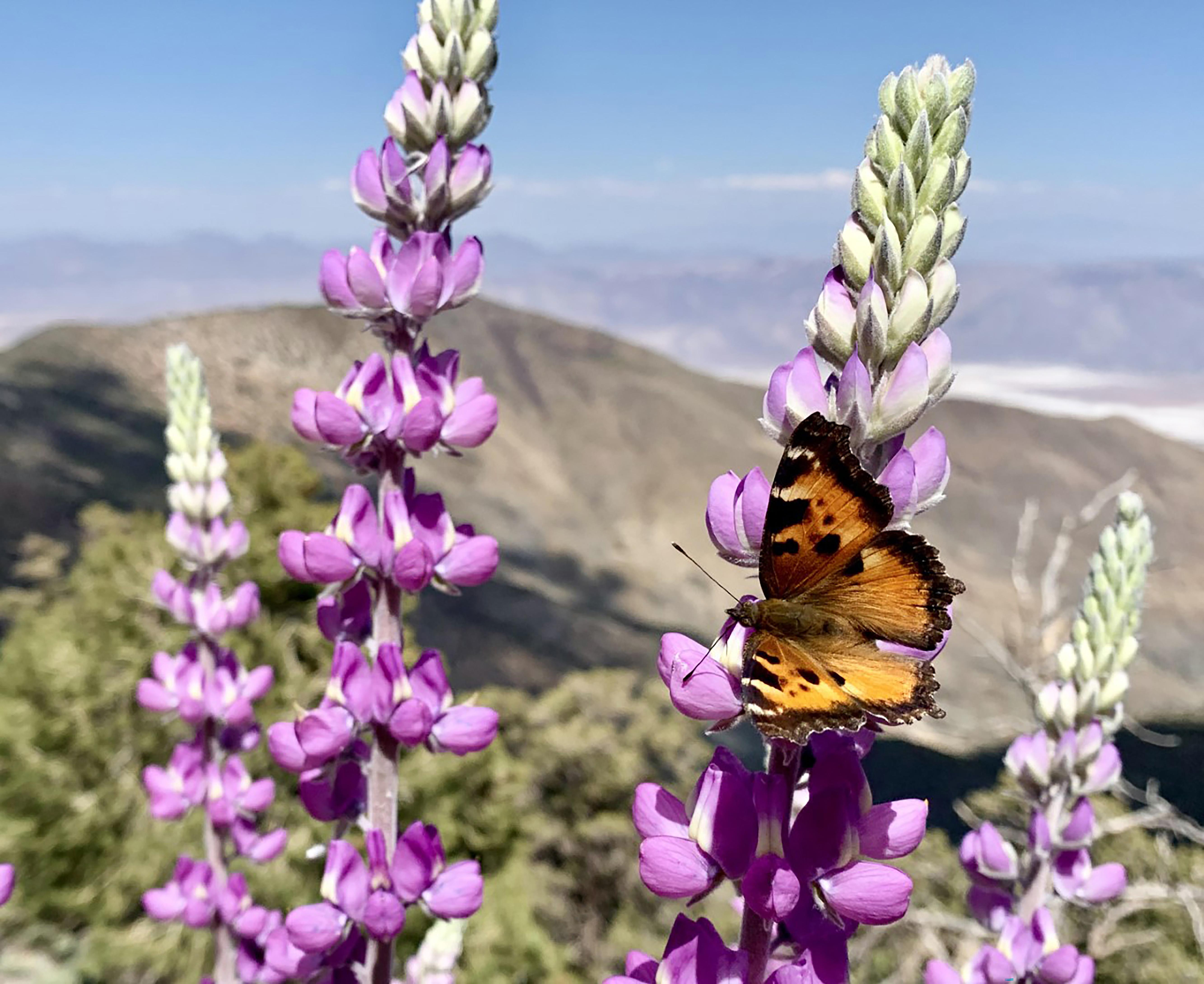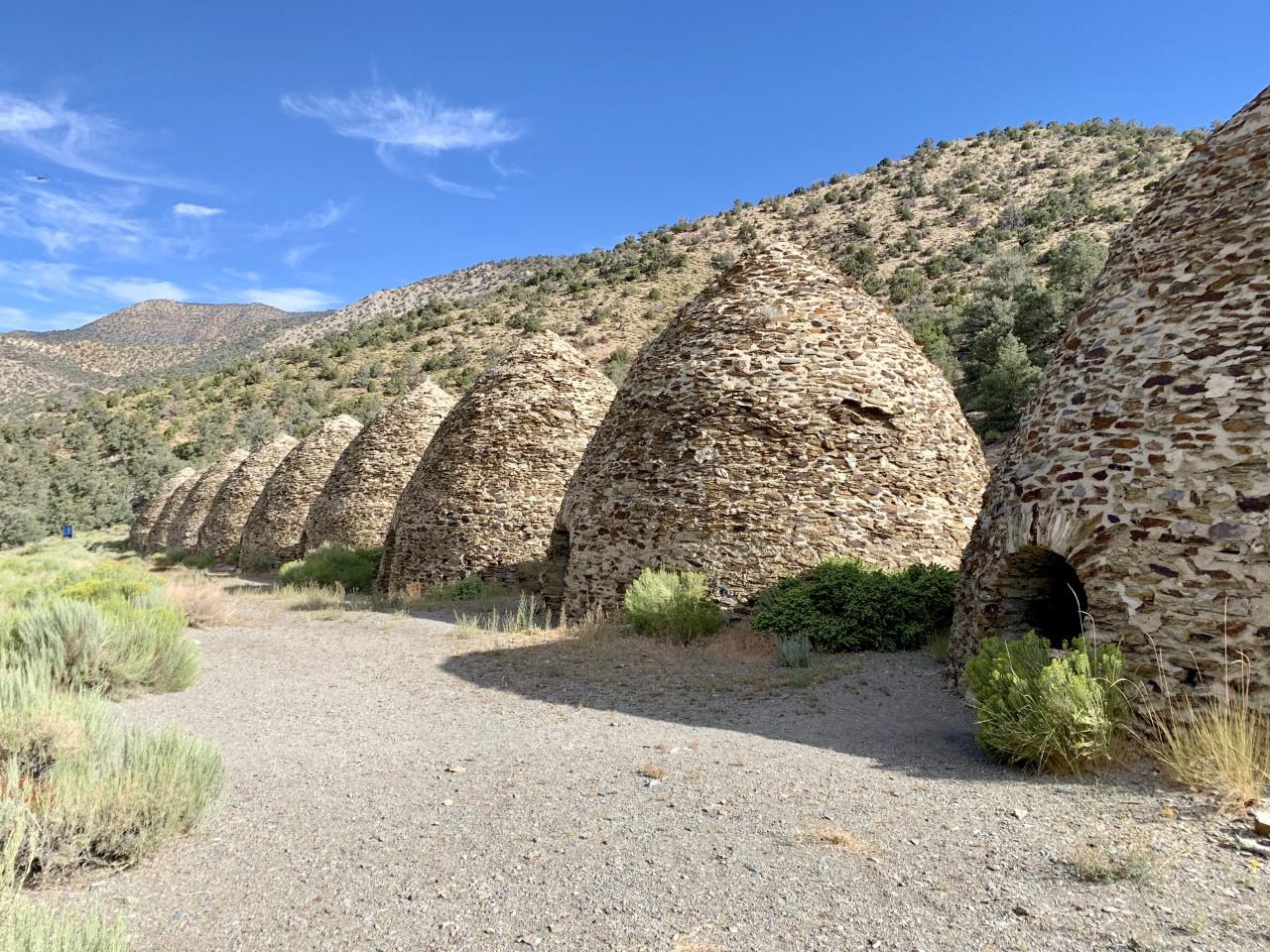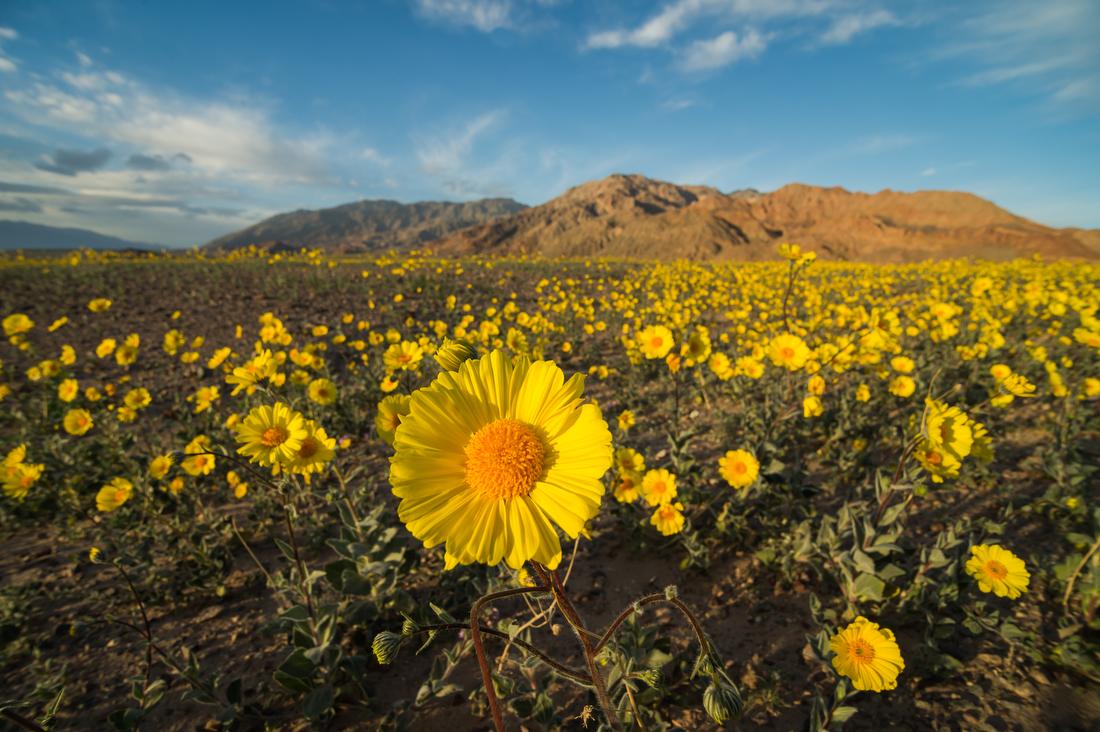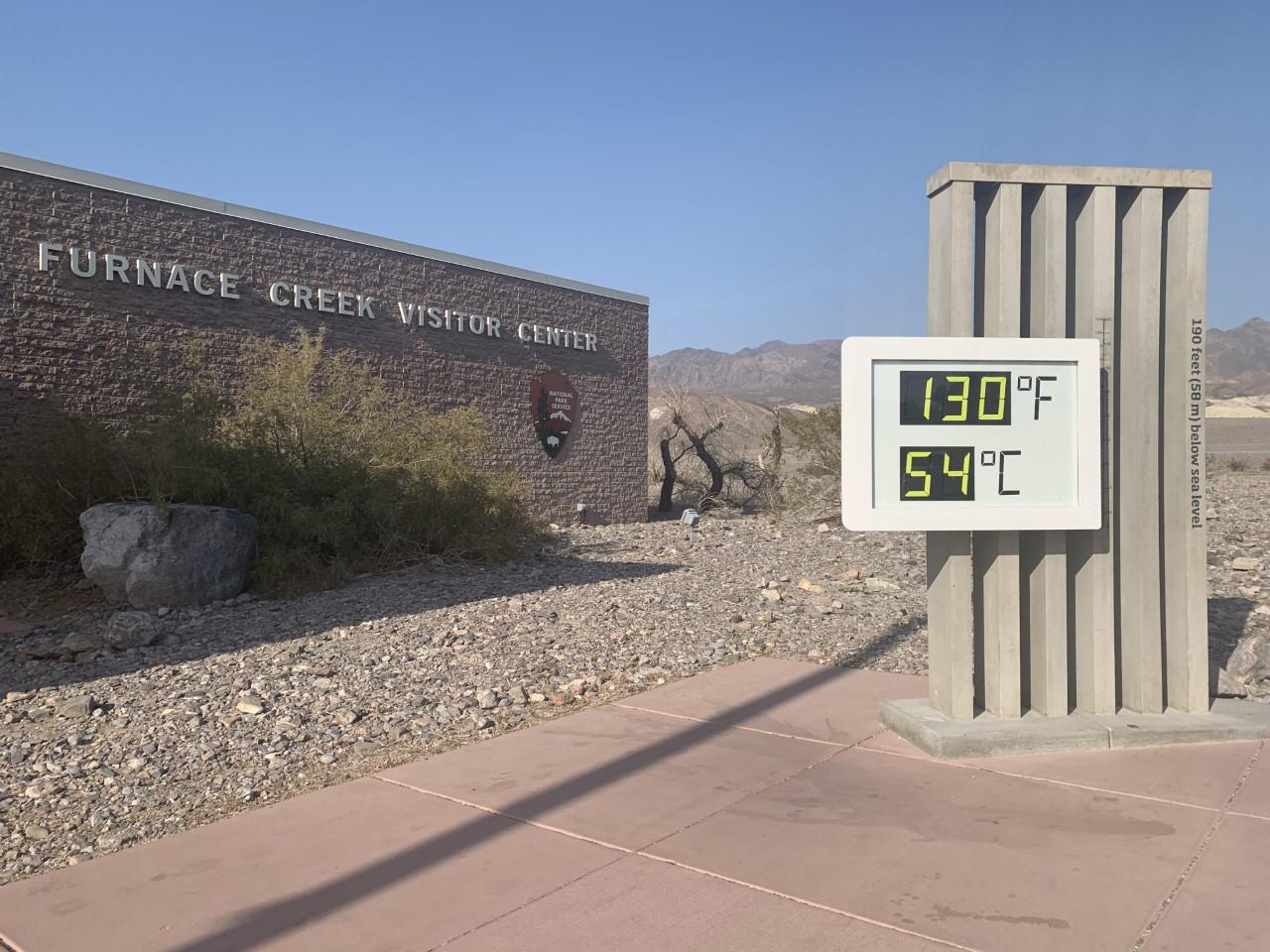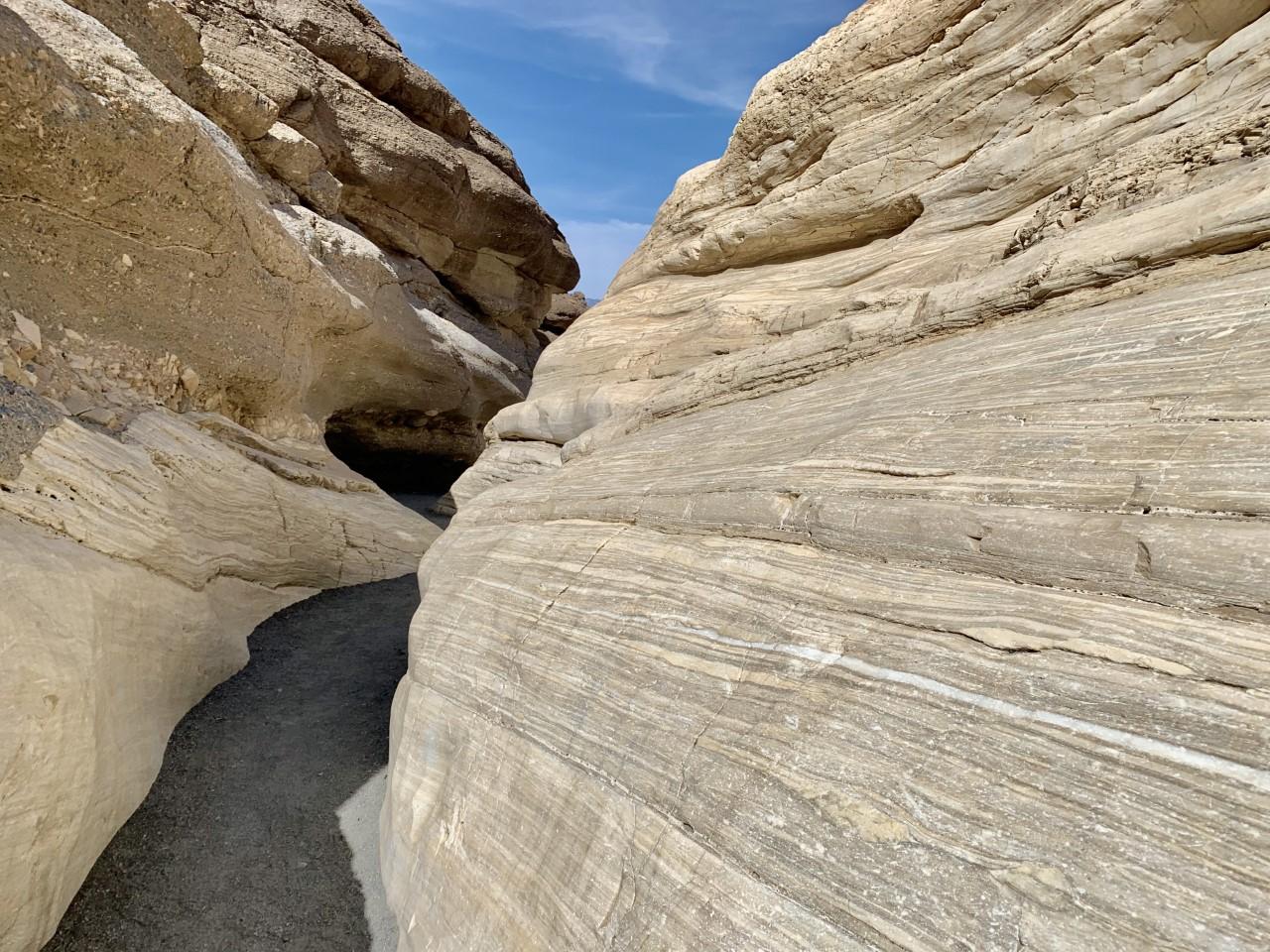In this below-sea-level basin, steady drought and record summer heat make Death Valley a land of extremes. Yet, each extreme has a striking contrast. Towering peaks are frosted with winter snow. Rare rainstorms bring vast fields of wildflowers. Lush oases harbor tiny fish and refuge for wildlife and humans. Despite its morbid name, a great diversity of life thrives in Death Valley.
Sunset from Zabriskie Point
The warm light of sunset covers the badlands at Zabriskie Point.
Zabriskie Point
Zabriskie Point is a popular place to view sunrise over the badlands.
Storm over the Salt Flats
Badwater Basin is the lowest point in North America at -282 feet.
Sunset at Dantes View
A mile above the salt flats in the valley below, Dantes View provides breathtaking vistas.
Lupine and Tortoiseshell Butterfly
Higher elevations provide a respite from the heat in this alpine ecosystem.
Wildrose Charcoal Kilns
Nearly a century and a half old, these are some of the best preserved kilns in the western U.S.
A rare superbloom of Desert Gold.
About once a decade, rains at the right times can lead to a rare superbloom!
Hottest Place on Earth
Summers are infamously hot, as for 6 months of the year temperatures above 120 degrees are regularly recorded.
Winding canyons await
There are numerous canyons to explore across this vast park.

